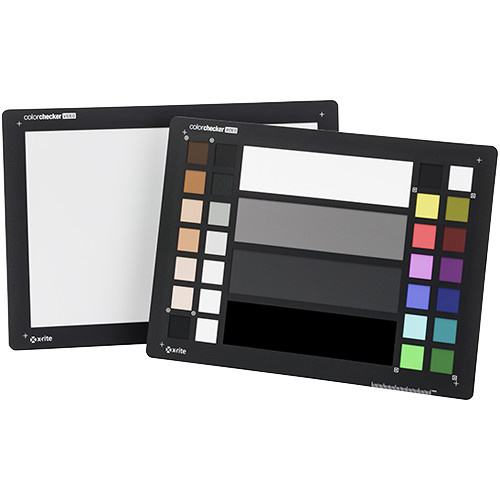In this article you will learn how to get perfect exposure and color in your videos, consistently every single time you shoot. And it all starts with getting your settings right in camera first.
A light meter is a great way to dial in an accurate exposure but not every one owns a light meter and a light meter will not help you to get an accurate white balance. A helpful tool for every videographer is the X-rite Color Checker Video which will aid you in getting both an accurate exposure and perfect white balance in camera.
It is also incredibly helpful in post production as well for further tweaking and refining your videos in your NLE of choice. It works in Adobe Premiere Pro, Final Cut Pro, and Davinci Resolve to name a few.
The first step is to use the colored side of the checker to set your exposure in camera. If you have a waveform monitor in your camera your goal is to set the light 18 percent gray patch second from the top to 40 ire. Also make sure that you place the video card in the same lighting conditions that your subject will be in.

Once you set your exposure you can flip the card around and set your camera’s custom white balance using the 18 percent gray patch. If you change lighting for example in your next shot from sun to shade you should also set a new custom white balance for the different lighting scenario.
You will find this method much more accurate that setting your cameras white balance Kelvin temperature to a set number. And you will also be able to use the colored side of the color checker in post production to further refine your exposure and color.
For this example we will be using Adobe Premiere Pro and most of our efforts will be focused toward using the Lumetri color adjustments. Make sure you also have your Lumetri color scopes enabled. You will require a waveform monitor, vector scope, and the RGB parade.

Once your scopes are enabled you can make exposure adjustments to align the 18 percent gray patch to 40 ire and your can also you the eye dropper tool to make small adjustments to your white balance.
Refer to the included video for step by step instructions and for some bonus tips for getting an accurate exposure and perfect colors every single time you shoot your videos.
If you have any exposure and white balance tips of your own, feel free to share them in the comment section below.






You lost me on the Hue vs. Hue curve :(